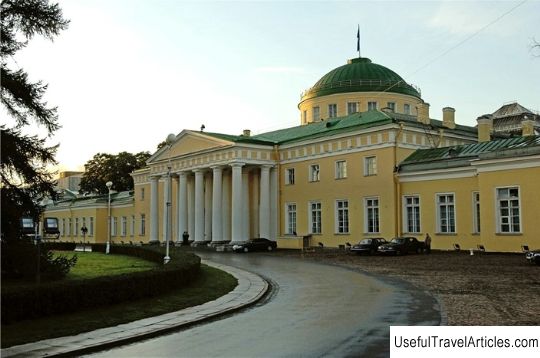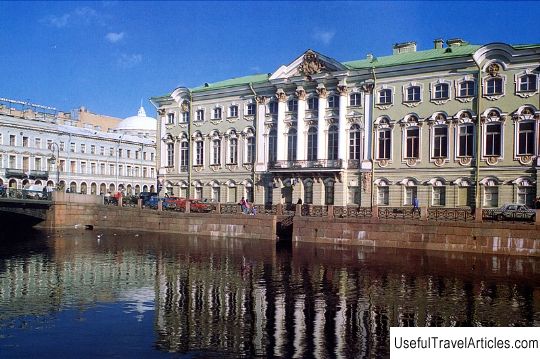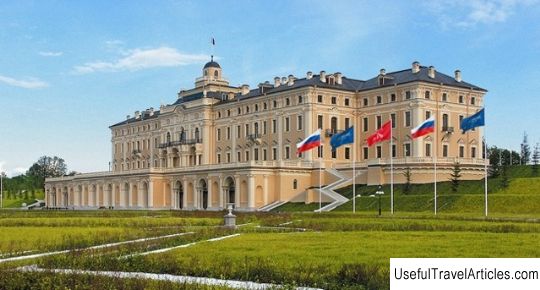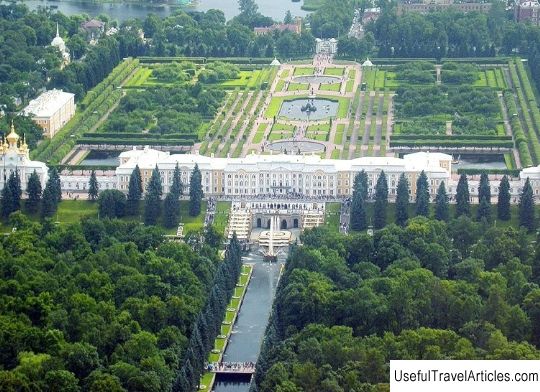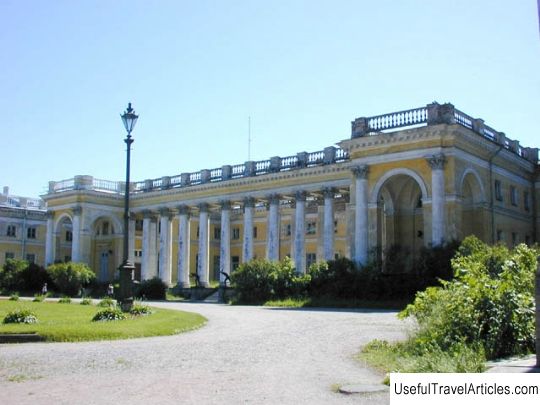Winter Palace description and photos - Russia - St. Petersburg: St. Petersburg
Rating: 9,2/10 (1689 votes) 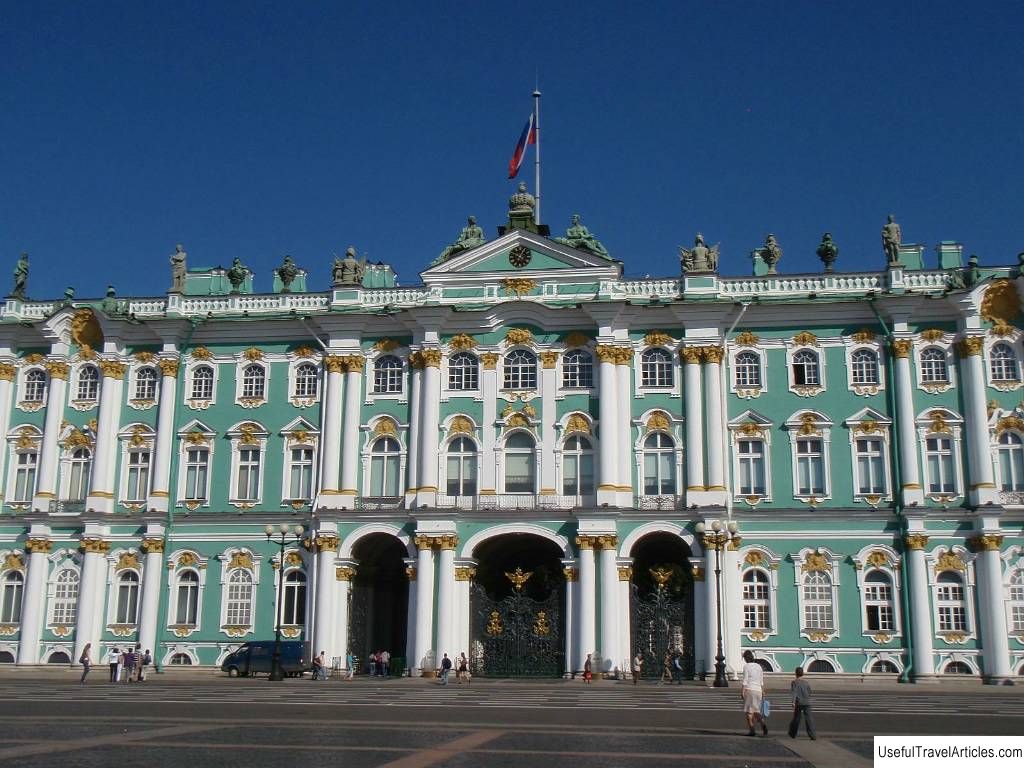
Winter Palace description and photos - Russia - St. Petersburg: St. Petersburg. Detailed information about the attraction. Description, photos and a map showing the nearest significant objects. Photo and descriptionPerhaps the most visited attraction in the northern capital of Russia is the Winter Palace. The building was built in the middle of the 18th century and was designed by Count Francesco Rastrelli . The palace was built in accordance with the canons of the Russian baroque of the times of Empress Elizabeth Petrovna . The style of the building's interiors is somewhat different - certain elements of Rococo (French) are used here. Until the beginning of the 20th century, the palace was an imperial residence. In the pre-revolutionary period, the building housed a hospital. After the revolutionary events, members of the Provisional Government met in the palace. Later, the building housed museum exhibitions . BackgroundBefore how the baroque building, which today adorns the Palace Square, was built, there were other winter imperial residences. There were four such buildings (or even five, if we count the one-story house of Peter I ). The first two were built at the beginning of the 18th century, during the Peter the Great era. The third building was built for Anna Ioannovna , to whom the Peter's residence seemed too cramped. More precisely, it was not the construction of a new building, but a restructuring and significant expansion of the old one. The rebuilt palace had about a hundred bedrooms, about seven dozen halls, a theater and many other rooms. Interestingly, almost immediately after the end of construction, it was decided to rebuild (expand) this building, which was soon implemented. When Elizaveta Petrovna expansion of the building was continued. More and more office premises were added to it, which did not in any way benefit the architectural appearance of the palace. As a result, the building looked so strange that it aroused the empress's displeasure and negative reviews from her contemporaries. The building was expanded again (this time in such a way that its appearance would please the eye). But when the empress decided to increase the palace not only in length and width, but also in height, the architect decided to simply rebuild it. This decision was approved by the Empress. In the meantime, the construction work was going on, the empress was in the temporary palace (fourth). It was dismantled in the 1860s. The construction of the palace and interior decorationHermitage - comes from the name of those palace chambers in which the paintings were originally placed. In the 30s of the XIX century, a strong fire , which destroyed almost all of its interiors. The flame raged for almost three days, it was not possible to extinguish it. Thirteen people (firefighters and soldiers) were killed in the fire. There is a version that in fact there were more victims, but official sources concealed this fact. After the fire in the palace, serious restoration work was carried out. They lasted for about two years and demanded great efforts from architects and builders. In the 80s of the XIX century, a explosion thundered in the palace - it was an attempt to assassinate the emperor by a terrorist organization. Many soldiers those on guard were wounded, several people were killed. The emperor was not injured. The first years of the XX century were marked by two significant events in the history of the palace - a grandiose costume ball and, two years later, a peaceful demonstration (unarmed workers walked across the square to the palace to hand over the petition to the emperor). In the post-revolutionary period, the palace was declared a state museum . Soon the first exhibition was opened there. Until the beginning of the 40s of the XX century, two state museums, the Hermitage and the Museum of the Revolution, coexisted in the building. During the war years, the palace cellars were converted into bomb shelters , but were eventually used as residential premises: about two thousand people permanently lived in them. The halls of the palace housed collections of several museums: the exposition of the Hermitage itself (more precisely, part of it, since the rest was evacuated), as well as the values of a number of other city museums were hidden there. Works of art from other palaces (located in the suburbs) were also hidden in the building. During the war, the building was badly damaged by bombs and artillery shelling. After the war, its restoration continued for many years. Architectural features and color The palace is built in the shape of a square. It is formed by wings, facades and a courtyard. All rooms and facades are luxuriously decorated. Main facade facing the square, it is decorated with an arch . The rhythm of the palace columns is characterized by variability, the risalits protrude strongly forward - these and other features of the building create the impression of dynamics, and also give the palace even more solemnity and majesty. As already mentioned above, in the middle of the 18th century the palace was the tallest building in the city (among residential buildings). In the 40s of the 19th century, an imperial decree was issued prohibiting the construction of such houses that would exceed the imperial residence in height. More precisely, the decree established a “height boundary” for buildings - approximately twenty-three and a half meters (eleven fathoms). This is the height of the palace. One of the consequences of this decree was as follows: From any of the rooftops of the old (central) part of the city, almost the entire northern capital of Russia is visible today. Separately, a few words must be said about the color scheme of the palace. During its long history, it has changed several times. The present appearance of the building, although it has already become familiar to the townspeople, does not correspond to the original plan of the architect. Some contemporary art critics and architects are in favor of returning the building to its original coloristic appearance. Palace Halls Each palace hall is actually an independent masterpiece (although the original interiors are almost not preserved), it is worthy of attention in itself and at the same time enhances the overall impression of splendor. Let's talk about some of these halls: - Antechamber was created at the end of the 18th century. During balls it was used as a front pantry: here gentlemen and ladies drank champagne. Pay attention to the plafond: this is a work by an Italian master; it refers to the small number of decorative elements that miraculously survived during a three-day fire. -Nicholas Hall (also called the Big) was also created at the end of the 18th century. In the old days, it was illuminated by lanterns made of blue glass. Blue rays fell on the colored marble that adorns the columns and walls for an amazing, unforgettable effect. The area of the hall is over a thousand square meters. In terms of size, this is the most impressive hall in the palace. In pre-revolutionary times, banquets and balls were held here (except for the time when the hospital was opened in the building). Currently, the hall hosts temporary exhibitions. - The Concert Hall is decorated with sculptures of ancient Greek goddesses and muses. Here you can also see a magnificent collection of antique Russian silver. - Another pearl of the palace is the Malachite living room . More than one hundred and twenty poods of malachite were used for its decoration. The room was finished with green stone after the fire; before that it was called Yashmova, and its decoration corresponded to the name. - Another interesting hall is the White Dining Room (also called Malaya). Members of the Provisional Government were arrested here. This happened at three o'clock in the morning - at which time the clock on the fireplace was stopped. Recently - on the centenary of the revolution - this watch was restarted. Cats of the Winter PalaceIn the 18th century, thirty cats were brought from Kazan to St. Petersburg. They were entrusted with an important mission - to rid the winter imperial residence of mice (the building was literally swarming with them). The descendants of these animals are engaged in the same noble cause at the present time: their task is to destroy mice in the basements and halls of the palace, thereby protecting the interiors and the museum exposition. About fifty cats carry out such a service today in the palace. Once a year (on the first day of April), a big holiday is usually arranged for them, where they can treat themselves to all kinds of delicacies as much as they want. Notes
                    We also recommend reading Museum of theatrical and musical art description and photo - Russia - St. Petersburg: St. Petersburg Topic: Winter Palace description and photos - Russia - St. Petersburg: St. Petersburg. |
